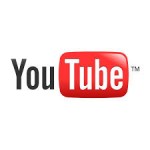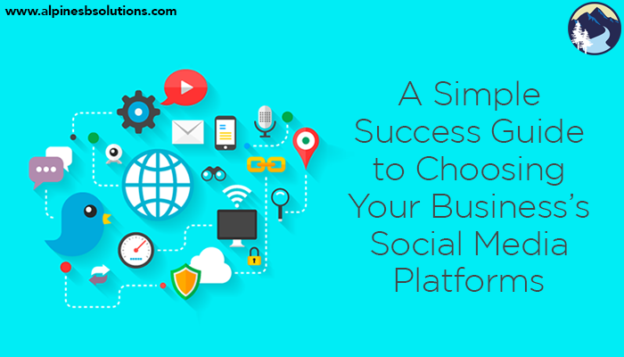With so many social media options out there, it can be hard to know which one(s) are best for your business. Each platform is unique, offering advantages and disadvantages over every other social media marketing option. With a brief overview of your social media options, however, you’ll be equipped to make the best choice for your business.
Remember, you know your business best. Knowing what each platforms offers will help you choose if it is right for your business and your audience.
What sets Facebook apart
Facebook’s prevalence. When people think “social media,” they usually think Facebook. With 1.67 billion users, it’s become integrated not only in the lives of Americans but individuals around the world. And it’s prevalent among marketers, with 93% of social media marketers using Facebook for their organization.
How individuals use Facebook
A main motivation to be active on Facebook is relational: connect with other individuals and organizations you care about (or at least, show a mild enough interest in you’ll be fine reading an update from). Users can range from the grandparent using Facebook occasionally to see photos of their grandkids to the young adult using Facebook daily to stay in touch with friends around the world and organizations championing their favorite causes.
How marketers can use Facebook
 Facebook done well can achieve so many of the benefits of social media marketing: relationship building, brand awareness, selling of products/services, etc. To gain these benefits, marketers need to continually post content. But quality of quantity is key (Facebook’s newsfeed algorithm results in every post seen only by a fraction of your total audience, the better quality Facebook deems your post the more people will see your post). Marketers can use Facebook to humanize the brand and interact with customers. Keep in mind that business posts will appear in people’s news feeds among emotional posts from their loved ones (think wedding photos, graduation photos, etc). You don’t want to post dry sales posts. You want to create posts that individuals will want to read-because they’re entertaining, engaging, etc.
Facebook done well can achieve so many of the benefits of social media marketing: relationship building, brand awareness, selling of products/services, etc. To gain these benefits, marketers need to continually post content. But quality of quantity is key (Facebook’s newsfeed algorithm results in every post seen only by a fraction of your total audience, the better quality Facebook deems your post the more people will see your post). Marketers can use Facebook to humanize the brand and interact with customers. Keep in mind that business posts will appear in people’s news feeds among emotional posts from their loved ones (think wedding photos, graduation photos, etc). You don’t want to post dry sales posts. You want to create posts that individuals will want to read-because they’re entertaining, engaging, etc.
What sets Twitter apart
The limit to post length. Users can only send posts with 140 characters or less. This helped Twitter become a place where users expect short snippets of information among a continual stream of posts.
How individuals use Twitter
A main motivation to be active on Twitter is informational: gain short and succinct pieces of information from individuals and organizations relevant to your life.
How marketers can use Twitter
 Twitter is a great tool to direct individuals to your website. In this way you can think of Twitter and your website like a news story. The headline and the lead are the Twitter post: it draws you in and provides just enough information you know what you’ll be reading about. The body of the article is your website post: the substance and entirety of what you want your audience to read. While posts can be great at directing individuals to your site, not every post needs to. Some posts can be a short story or message in of themselves. Twitter is also a way of getting your posts “categorized” under relevant topics through the use of hashtags. Users can search with a hashtag to find relevant posts on that topic. Ideally, they will see your post, discover your organization, and become a consumer of your social and web content and your services/products.
Twitter is a great tool to direct individuals to your website. In this way you can think of Twitter and your website like a news story. The headline and the lead are the Twitter post: it draws you in and provides just enough information you know what you’ll be reading about. The body of the article is your website post: the substance and entirety of what you want your audience to read. While posts can be great at directing individuals to your site, not every post needs to. Some posts can be a short story or message in of themselves. Twitter is also a way of getting your posts “categorized” under relevant topics through the use of hashtags. Users can search with a hashtag to find relevant posts on that topic. Ideally, they will see your post, discover your organization, and become a consumer of your social and web content and your services/products.
What sets Linkedin apart
The targeted audience. Everyone on Linkedin is either a current or aspiring professional. This specific nature of its audience results in content creation that tends to see an industry or career slant to it. And because published posts are tied to individuals’ professional profile, the amount of spam and overly promotional posts tends to be lower than on other platforms.
How individuals use Linkedin
A main motivation to be active on Linkedin is professional: to sell yourself, network, and in some cases find new employment. Individuals follow organizations that they care about and/or that provide relevant articles that help them in improving their personal or professional self.
How marketers use Linkedin
 Linkedin is great for increasing brand awareness and acquisition. Individuals can publish articles on Linkedin that can be seen by individuals not already connected with your organization, as well as communicate within Linkedin groups (targeted communities on Linkedin, such as women small business owners). Marketers can post regular updates like they can on other social media platforms, but much of the benefit of Linkedin activity comes from article writing and group participation.
Linkedin is great for increasing brand awareness and acquisition. Individuals can publish articles on Linkedin that can be seen by individuals not already connected with your organization, as well as communicate within Linkedin groups (targeted communities on Linkedin, such as women small business owners). Marketers can post regular updates like they can on other social media platforms, but much of the benefit of Linkedin activity comes from article writing and group participation.
Google+
What sets Google+ apart
The owner. Google+ is owned by Google, and Google rewards those who use its platform. When marketers post to Google+ they reap rewards from Google, namely SEO benefits.
How individuals use Google+
A main motivation to be active on Google+ is to gain the SEO benefits as a marketer. Google+ frankly is Google’s failed attempt at creating a social media platform to compete with Facebook and Twitter. Not as many users are on Google+, but people can use it as a way to connect with other individuals who share similar interests. Individuals will follow organizations they share a connection with or that provide useful content.
How marketers use Google+
 Marketers post content to help boost their SEO. Oftentimes marketers strapped for time post their Facebook posts on Google+ as well (using a scheduling tool like Hootsuite). Because fewer people are on Google+ there is less of an expectation of organization-customer interaction. If people are willing to interact with your page, great! But usually Google+ usage is focused on posting regular content for SEO benefits.
Marketers post content to help boost their SEO. Oftentimes marketers strapped for time post their Facebook posts on Google+ as well (using a scheduling tool like Hootsuite). Because fewer people are on Google+ there is less of an expectation of organization-customer interaction. If people are willing to interact with your page, great! But usually Google+ usage is focused on posting regular content for SEO benefits.
YouTube
What sets YouTube apart
The content. YouTube is just videos. No writing messages, no posting pictures, just videos.
How individuals use YouTube
A main motivation to be active on YouTube is to find and watch videos. Some people will search for individual videos, others will follow certain users and brands. People search for a variety of videos, from entertainment-focused to informational-driven.
How marketers use YouTube
 Creating engaging videos is a great way to turn out shareable content, engage audiences, and improve SEO. YouTube is great for brand awareness given the potential of good videos being shared among individuals (remember the Ice Bucket Challenge and the money it raised for the ALS organization).
Creating engaging videos is a great way to turn out shareable content, engage audiences, and improve SEO. YouTube is great for brand awareness given the potential of good videos being shared among individuals (remember the Ice Bucket Challenge and the money it raised for the ALS organization).
What sets Pinterest apart
Its focus is curation and organization of content. Pinterest works like a virtual bulletin board with users able to save photos, videos, and articles from throughout the Internet to various themed boards.
How individuals use Pinterest
A main motivation to be active on Pinterest is to find articles, photos, and videos that inspire or resonate with you. Usually it’s information you can “act” on, like a how-to crafting article. Sometimes it’s information that serves as a foundation for inspiration, like a photo of a well-designed kitchen.
How marketers use Pinterest
 Like Twitter, Pinterest is a great way to direct individuals to your website. Creating pins with engaging photos and text will draw individuals in and persuade them to check out the content on your website. Pins can also be created to showcase your products and services, helping you to grow your business.
Like Twitter, Pinterest is a great way to direct individuals to your website. Creating pins with engaging photos and text will draw individuals in and persuade them to check out the content on your website. Pins can also be created to showcase your products and services, helping you to grow your business.
The social media platform(s) best for your organization depends on how your target audience uses the platform(s) and how you want to approach your social media marketing. For organizations just starting out on social media, Facebook is a great go-to because its user friendliness and potential for high marketing benefits. If you want to take advantage of one (or many!) of the social media platforms for your organization, but aren’t sure where to start, Alpine Small Business Solutions is here for you! We’d love to help you through this, or any aspect of small business building. Reach out with an email or phone call today!

